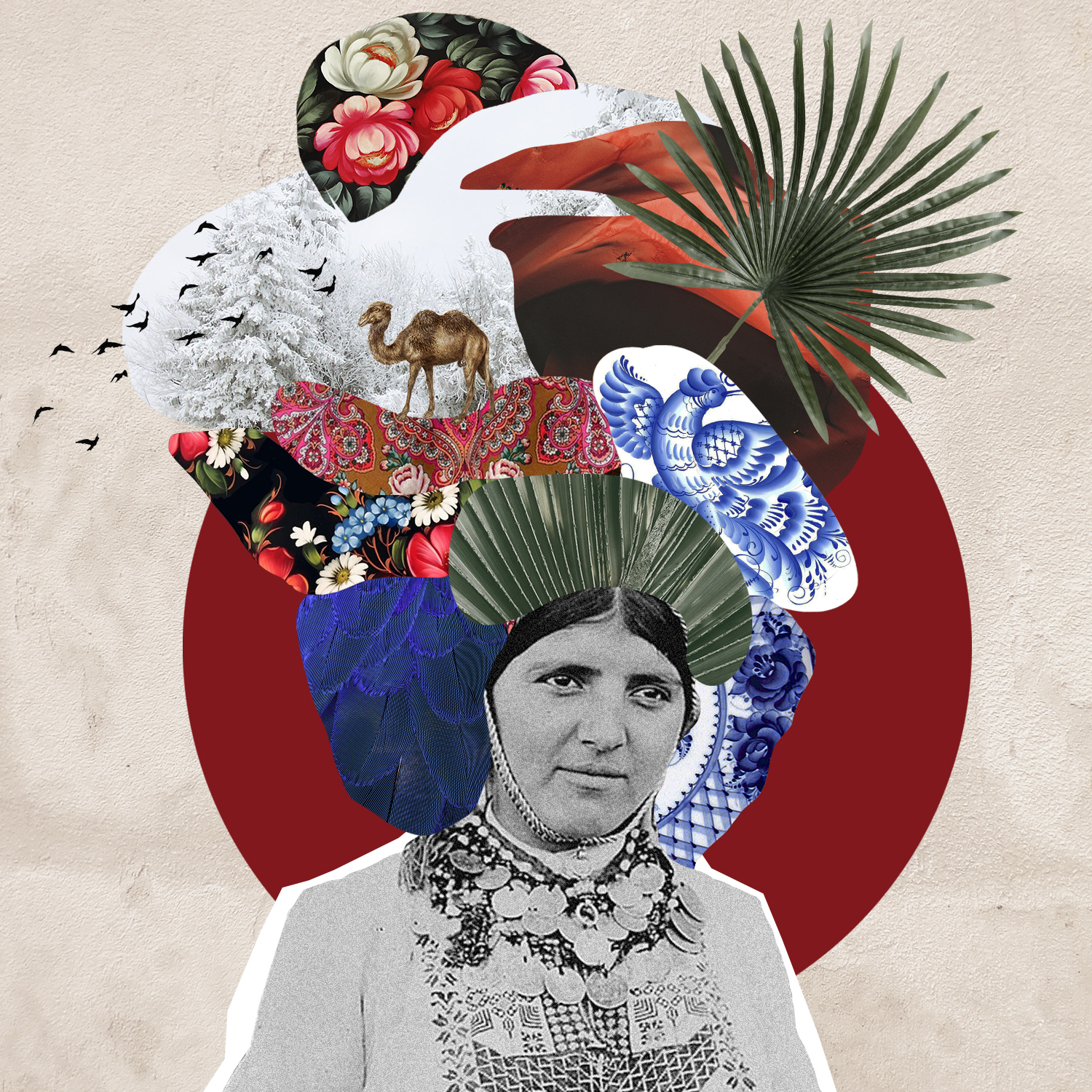By Diana Al Shaer
Cultural diplomacy is often called soft power, and this power can be surprisingly strong when it comes to delivering the most difficult messages. Art evokes feelings, and good art can go deep beyond the surface and reach, even open up, the most critical and analytical minds.
Leo Tolstoy once stated that art communicates emotions with the aim of promoting mutual understanding. As we sense and respond to the transmitted emotions, we turn information into a dialogue. Palestinian artists are powerful messengers whose role in cultural diplomacy should not be underestimated. They use their art to reconnect with their roots and express their longing for their homeland. Their works aim to raise awareness about the Palestinian struggle and the ongoing occupation. Most of them are united by the shared pain of real stories that tell of the displacement of their people and families.
Around five years ago, I decided to start a project to raise awareness about Palestine, searching for alternative ways to break through the narratives of the mainstream media.* Having lived in different countries, I was given the chance to understand how people perceive any kind of information that is connected to Palestine. In my experience, when you start talking about the political situation, the occupation, or any aspect of the Palestinian struggle, people refer to the notion that the matter is too complicated. Any attempt to start the conversation from a political angle tends to be inefficient, and the information does not come through.
Thus, I intuitively decided to interview talented contemporary Palestinian artists around the world. My goal was to steer away from politics. But as soon as I started to do research about the works of Palestinian artists, I realized that art is a way to express real stories, a way to break through the big abyss of silence in the mainstream media. It is therefore nearly impossible to completely distinguish it from the political situation. Art constitutes another, more efficient way to be heard and to express an active civil position.
One of the iconic Palestinian artists who started this movement is Mahmoud Darwish. His poems are full of love and pain for his country, and he sets the dialogue with his audience through feelings. Feeling the depth and beauty of his language, together with the honesty of his expression, readers start to open up to the information. He has been called a political poet, and he carried out his political actions through his poems.
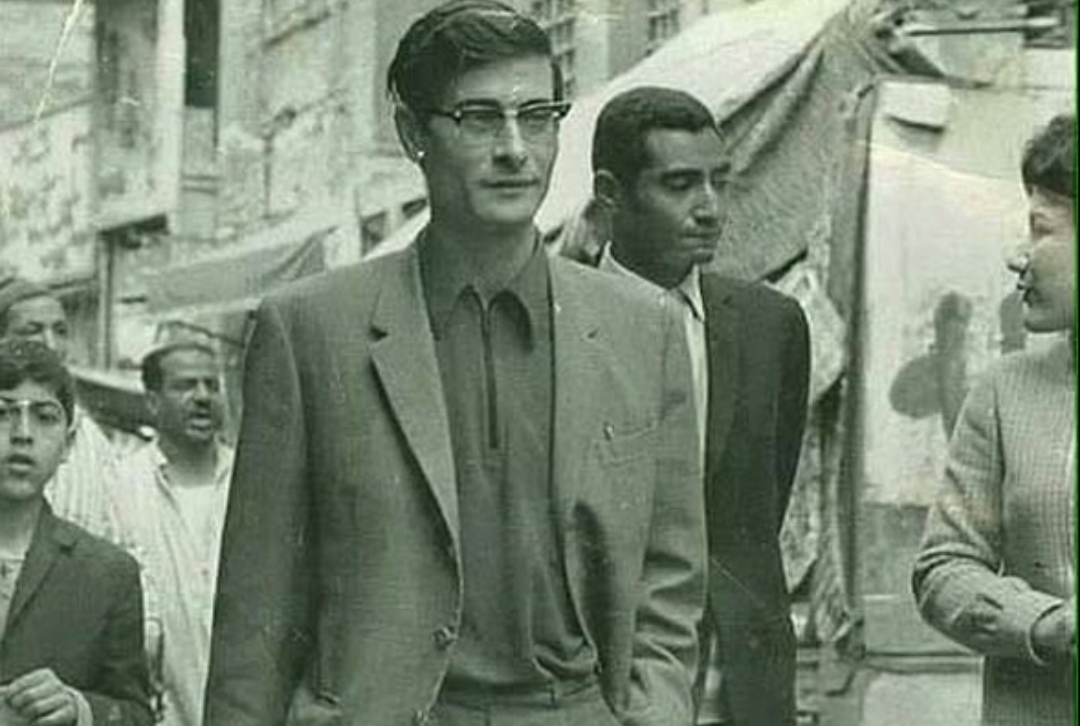
Mahmoud Darwish
Today, we can see how Mahmoud Darwish’s art is being kept alive by his friends, the famous Palestinian musicians of the Trio Joubran. The Joubran brothers used to give concerts together with the poet, and his poems were harmoniously intertwined with the notes of their music. To this day, Darwish’s recorded voice is heard at each concert of the Trio Joubran. The ensemble expresses its love and dedication for Palestine not only through its music but also through its interaction with the audience. This is another example of efficient cultural diplomacy.
The famous Palestinian visual artist Ismail Shammout focused on Palestinian symbolism and culture. His art is a way to illustrate Palestinian history and the struggle of the refugees that has been ongoing since 1948.
The famous Palestinian visual artist Ismail Shammout focused on Palestinian symbolism and culture. His art is a way to illustrate Palestinian history and the struggle of the refugees that has been ongoing since 1948.
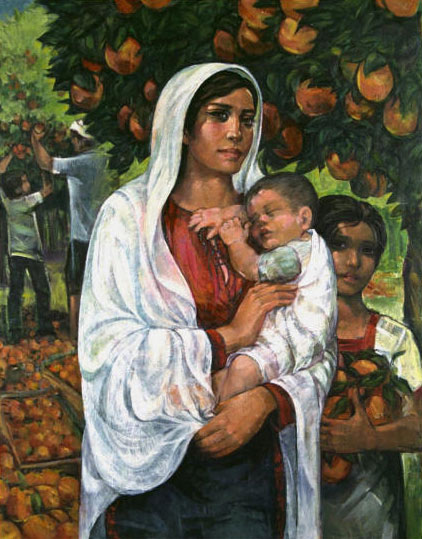
Ismail Shammout, Madonna of the Oranges
I was honored to talk to some famous contemporary Palestinian artists whose works are exhibited at well-known international art museums. Among them is Samia Halaby, a Palestinian abstract artist, activist, and educator. Not only is Samia actively defending Palestinian freedom and speaking up about the struggle, but she has also contributed to the documentation of Palestinian art of the twentieth century in her book Liberation Art of Palestine: Palestinian Painting and Sculpture in the Second Half of the 20th Century. Samia has initiated many exhibitions that have promoted Palestinian contemporary artists, and she continues to dedicate her life to showcasing Palestinian history and the Palestinian struggle in her work and on social media.
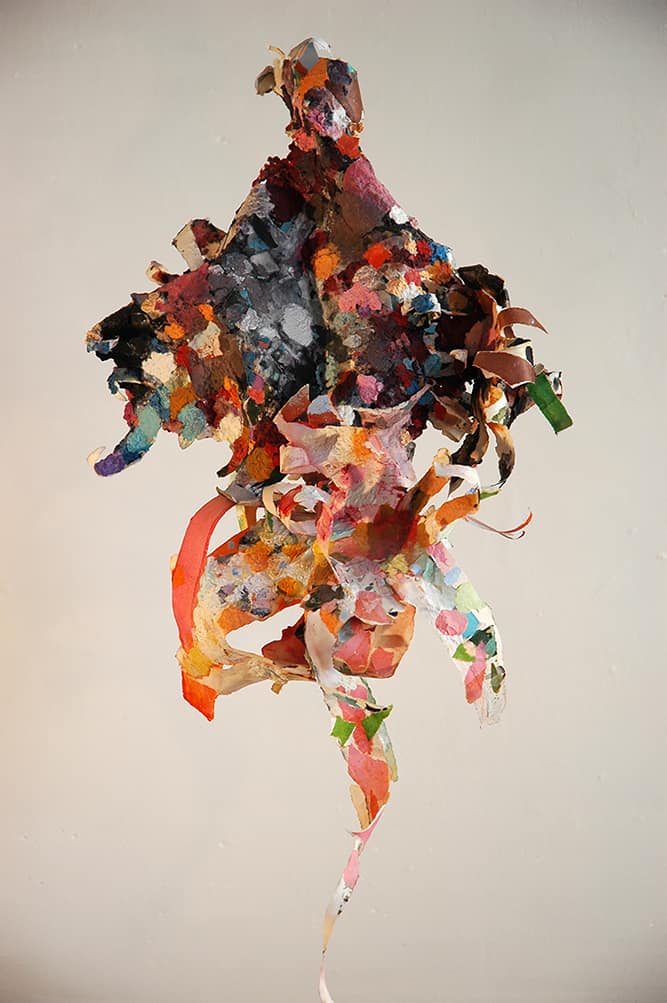
Samia Halaby, Jllayq
Another prominent Palestinian artist and educator whose works are exhibited worldwide is Rula Halawani. Rula started her journey as a photojournalist, but after facing the brutality of war, she decided to choose another path and express reality through fine art photography. Her devotion to Palestine and her family and the colors she uses to express her feelings touch the viewers of her works which can be found in significant international exhibitions worldwide.
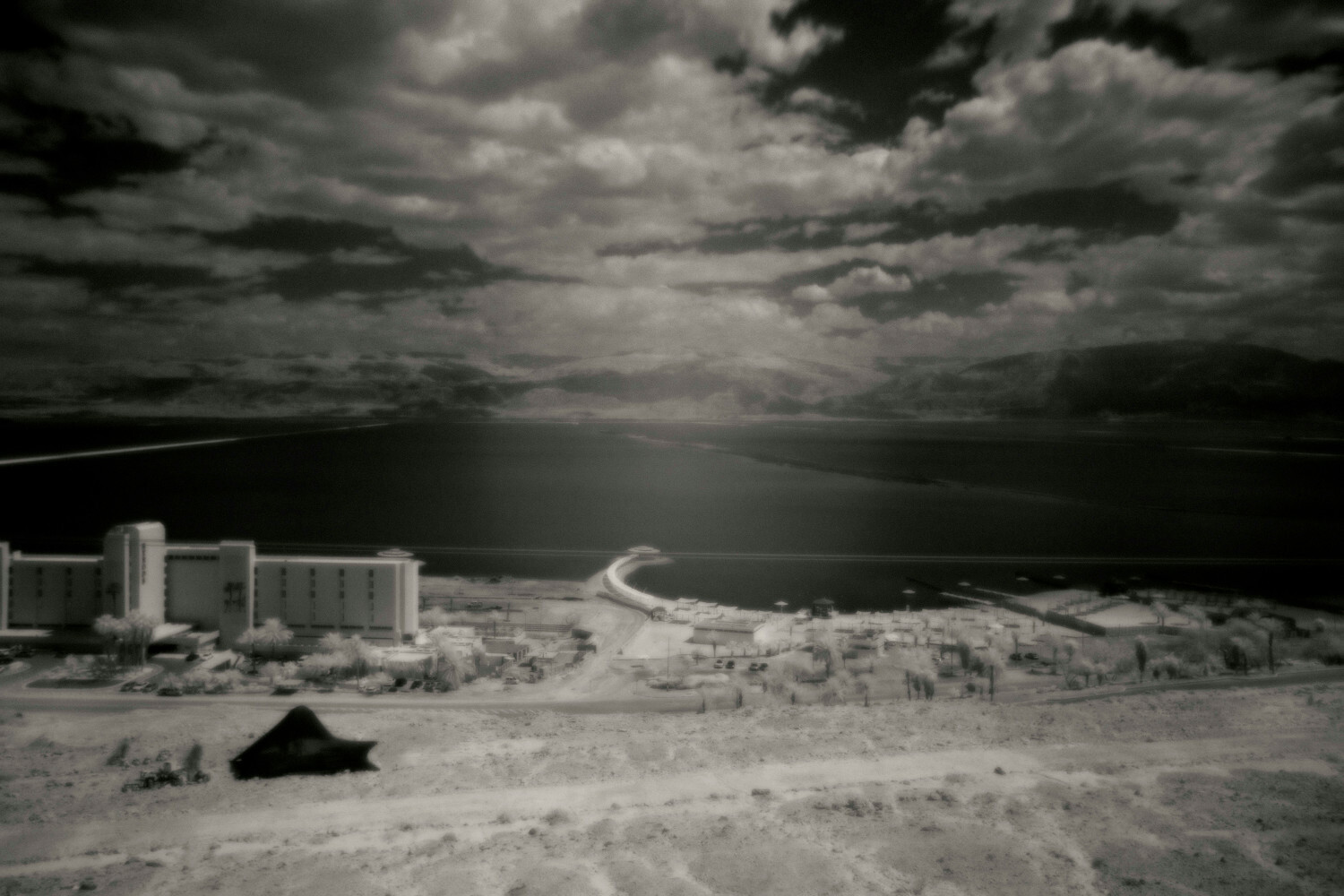
Rula Halawani, "Aware"
Mona Hatoum is a multimedia and installation artist. The topic of displacement and human struggle in her artworks challenges the viewer to confront the realities of the Palestinian experience.
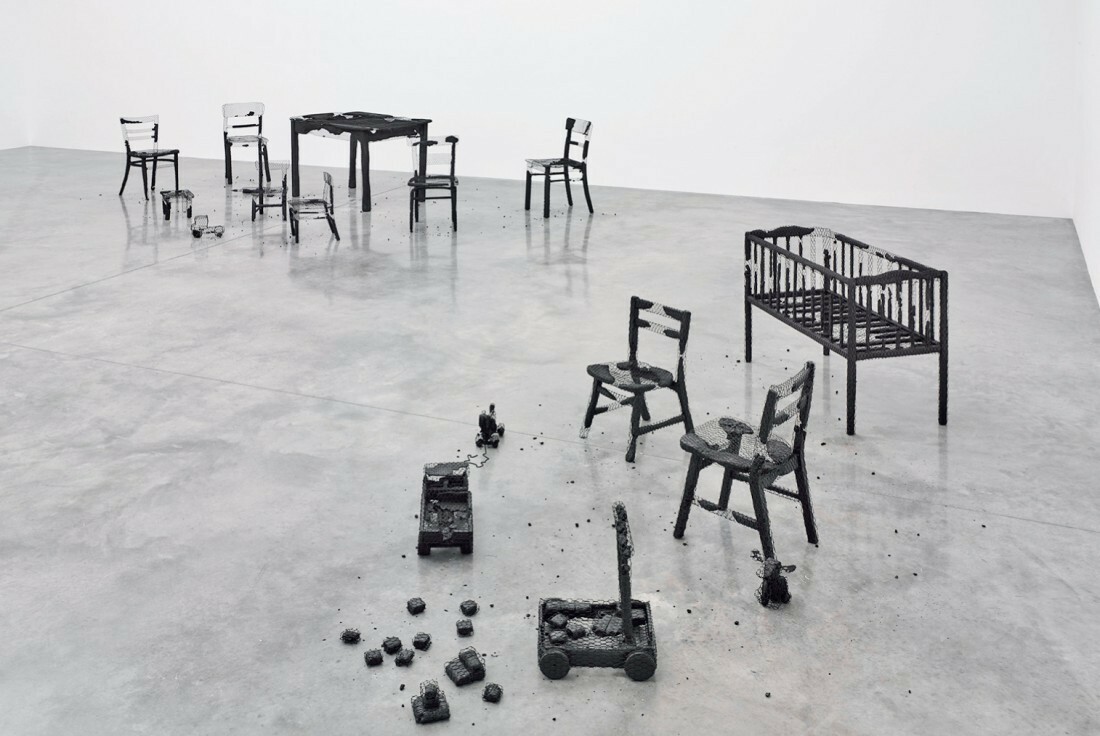
Mona Hatoum, installation views, “Remains to be Seen”
Another contemporary multimedia artist is Larissa Sansour. Her main art forms are photography, film, sculpture, and installation. Her art is a blend of science fiction and political commentary, covering the topics of land, resistance, identity, and a unique view of the Palestinian narrative.
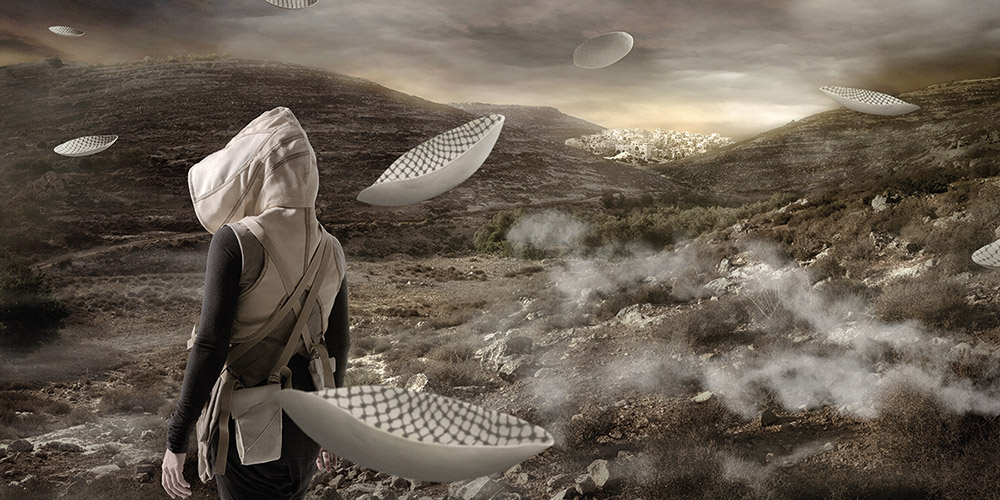
Larissa Sansour, The Future of Survival
What unites the majority of Palestinian artists is that their families have faced expulsion and were displaced from their homes. Some of them managed to return, while others have kept their motherland in their hearts and their works.
It is interesting that trauma is passed down from generation to generation. Today, you can meet Palestinian artists who have lived their entire lives in different countries but at a certain stage began to dedicate their works to the Palestinian struggle. One such example is Dalia Elcharbini, a talented young artist based in Canada. She has a beautiful way of showcasing Palestine through various elegant forms, using her signature technique that combines graphite, India ink, and gold leaf.
It is interesting that trauma is passed down from generation to generation. Today, you can meet Palestinian artists who have lived their entire lives in different countries but at a certain stage began to dedicate their works to the Palestinian struggle. One such example is Dalia Elcharbini, a talented young artist based in Canada. She has a beautiful way of showcasing Palestine through various elegant forms, using her signature technique that combines graphite, India ink, and gold leaf.
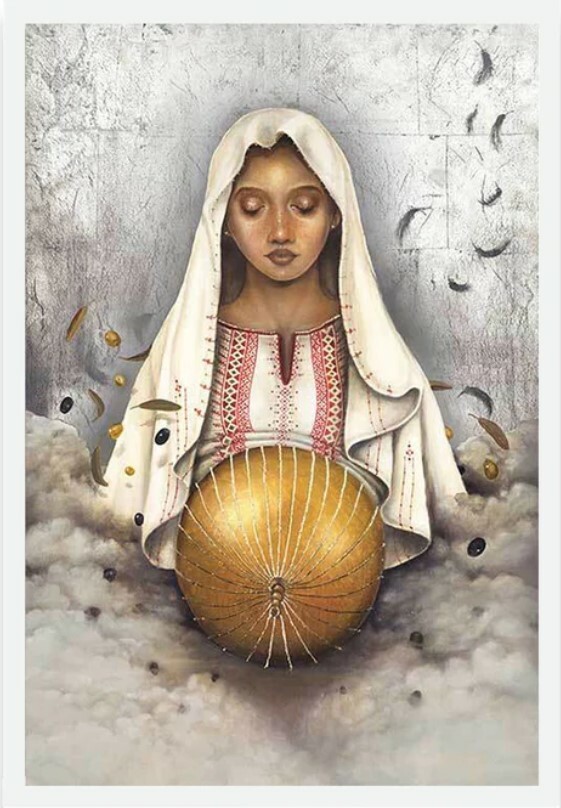
Dalia Elcharbini, Jerusalem's Birth'
Palestinian artists, whether they live abroad or have remained in Palestine, play a crucial role in cultural diplomacy. Their art serves as a bridge between different cultures and societies, allowing for a deeper understanding and empathy towards the Palestinian cause.
In a world where political discussions tend to divide, art provides a universal language that transcends borders and ideologies. It has the power to evoke emotions, challenge preconceived notions, and start a dialogue. It promotes cultural understanding and fosters a sense of solidarity and support for the Palestinian people. Palestinian art serves as a very important reminder that behind the headlines and political complexities, there are individuals with dreams, hopes, and a desire for peace and justice.
We should not underestimate the invaluable role that cultural diplomacy and art play in promoting dialogue, understanding, and, ultimately, a path toward peace. Let it be a powerful tool for change that will help confront injustices and inspire others to take action.
Blurb (pullout box): Through cultural diplomacy, Palestinian artists break through the barriers of silence and misinformation, shedding light on the human side of the Palestinian struggle.
*The program titled “Dialogue” is available on YouTube at https://www.youtube.com/watch?v=BEp8sIsg2dQ&ab_channel=PalirusMedia or
https://youtu.be/n6VUzgXFTiE?si=fI1C_jTBGz7RKJ62.
Diana Al Shaer is an athlete, a sports and cultural diplomat, and the founder of the media platform PaliRus. She has represented Palestine as a dressage rider at the International Grand Prix and is the first Arab woman to compete at the World Equestrian Championships in dressage. She currently serves as president of the International Amateur’s Equestrian Association, chairwoman of the dressage committee in the FEI Group 7 (MENA region), and a board member of the Palestine Equestrian Federation (Department of Foreign Affairs) and the NGO Leonard Education.
In a world where political discussions tend to divide, art provides a universal language that transcends borders and ideologies. It has the power to evoke emotions, challenge preconceived notions, and start a dialogue. It promotes cultural understanding and fosters a sense of solidarity and support for the Palestinian people. Palestinian art serves as a very important reminder that behind the headlines and political complexities, there are individuals with dreams, hopes, and a desire for peace and justice.
We should not underestimate the invaluable role that cultural diplomacy and art play in promoting dialogue, understanding, and, ultimately, a path toward peace. Let it be a powerful tool for change that will help confront injustices and inspire others to take action.
Blurb (pullout box): Through cultural diplomacy, Palestinian artists break through the barriers of silence and misinformation, shedding light on the human side of the Palestinian struggle.
*The program titled “Dialogue” is available on YouTube at https://www.youtube.com/watch?v=BEp8sIsg2dQ&ab_channel=PalirusMedia or
https://youtu.be/n6VUzgXFTiE?si=fI1C_jTBGz7RKJ62.
Diana Al Shaer is an athlete, a sports and cultural diplomat, and the founder of the media platform PaliRus. She has represented Palestine as a dressage rider at the International Grand Prix and is the first Arab woman to compete at the World Equestrian Championships in dressage. She currently serves as president of the International Amateur’s Equestrian Association, chairwoman of the dressage committee in the FEI Group 7 (MENA region), and a board member of the Palestine Equestrian Federation (Department of Foreign Affairs) and the NGO Leonard Education.
